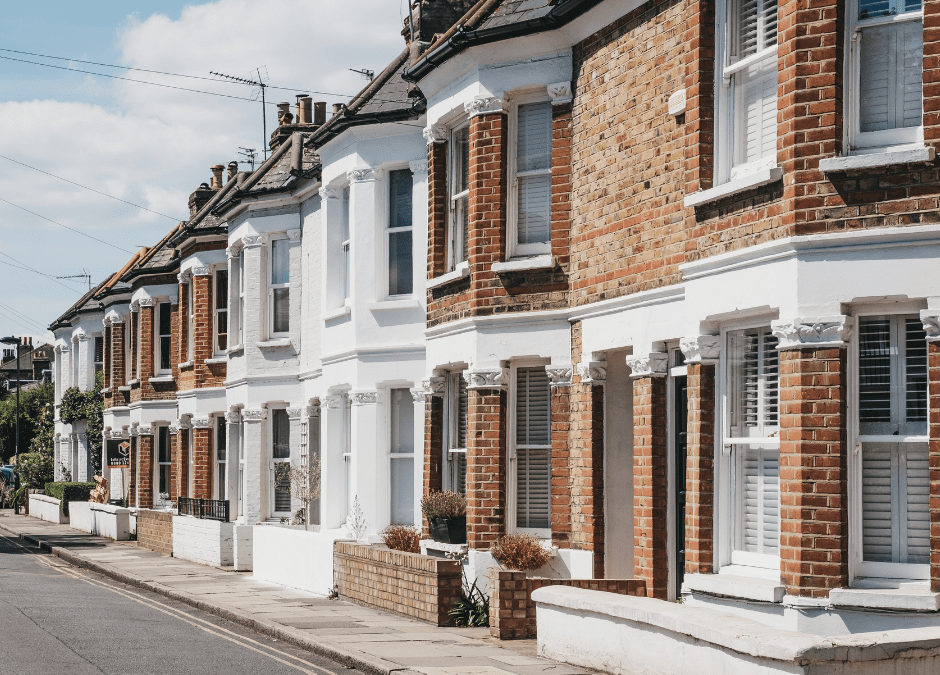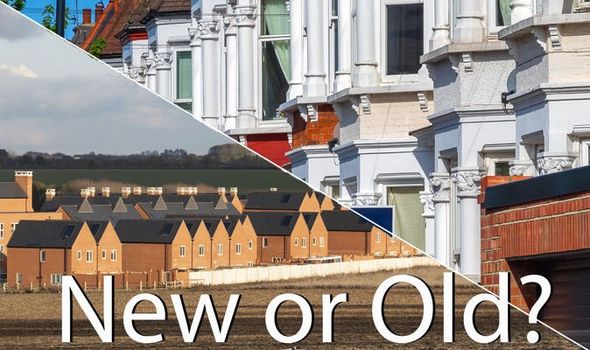The UK housing market offers a diverse range of luxury homes, from ultra-modern new builds with cutting-edge amenities to historic properties rich with character and charm. Deciding between a new build and a historic home involves weighing various factors such as aesthetics, maintenance, location, and lifestyle preferences. This comprehensive guide will explore the key differences between new build and historic luxury homes in the UK, helping you determine which style best suits your needs.
Advantages of New Build Luxury Homes

1. Modern Amenities and Technology
New build luxury homes are designed with contemporary living in mind, featuring state-of-the-art amenities and advanced technology. These homes often include smart home systems, energy-efficient appliances, and integrated security solutions. Modern features such as underfloor heating, automated lighting, and climate control systems enhance comfort and convenience.
2. Energy Efficiency
New builds are constructed to meet current building regulations and energy efficiency standards. They typically feature superior insulation, double or triple-glazed windows, and energy-efficient heating systems. This can result in lower utility bills and a reduced carbon footprint, making new builds an attractive option for environmentally conscious buyers.
3. Customization Opportunities
Buying a new build offers the opportunity to customize various aspects of the home to suit your personal preferences. Developers often allow buyers to choose finishes, fixtures, and layouts, ensuring the property reflects their individual style. This level of customization can be particularly appealing to those looking to create a bespoke living space.
4. Lower Maintenance Costs
New build homes require less maintenance compared to older properties. Constructed with modern materials and techniques, these homes are built to be durable and low-maintenance. Additionally, new builds typically come with warranties covering major structural components and systems, providing peace of mind and financial protection.
5. Compliance with Building Standards
New builds adhere to the latest building standards and safety regulations. This means they are constructed to high-quality specifications, ensuring structural integrity and safety. Buyers can be confident that their new home meets current fire safety, electrical, and plumbing standards.
Disadvantages of New Build Luxury Homes
1. Higher Initial Cost
New build luxury homes often come with a premium price tag due to the modern amenities, customization options, and energy-efficient features. Buyers should be prepared for a higher initial investment compared to purchasing a historic property.
2. Limited Location Options
New build developments are often situated in suburban or emerging areas rather than established city centers or historic neighborhoods. This can limit your location choices, especially if you prefer to live in a specific area with a rich history or unique character.
3. Potential for Construction Delays
When purchasing a new build, there is a possibility of construction delays due to unforeseen issues or developer setbacks. This can be a drawback for buyers who need to move in within a specific timeframe.
Advantages of Historic Luxury Homes
1. Unique Architectural Features
Historic luxury homes are renowned for their unique architectural details and craftsmanship. Features such as high ceilings, ornate moldings, grand fireplaces, and intricate woodwork provide a level of character and charm that is difficult to replicate in new builds. These homes often reflect the architectural styles and heritage of their era, offering a sense of history and authenticity.
2. Prestigious Locations
Many historic homes are located in prestigious and well-established neighborhoods with mature landscaping, tree-lined streets, and a strong sense of community. These areas often boast excellent amenities, including top-rated schools, fine dining, and cultural attractions. Living in a historic neighborhood can enhance your lifestyle and provide a sense of exclusivity.
3. Investment Potential
Historic homes can offer significant investment potential due to their scarcity and timeless appeal. Properties with historical significance or architectural distinction often appreciate in value over time. Additionally, owning a historic home can provide unique opportunities for preservation grants and tax incentives.
4. Established Community and Amenities
Historic neighborhoods often have well-established communities with a rich cultural heritage. Residents can enjoy the benefits of long-standing amenities, such as parks, shops, and entertainment venues. The sense of community and historical significance can create a unique and enriching living experience.
5. Immediate Availability
Unlike new builds, which may have construction delays, historic homes are typically available for immediate occupancy. This can be advantageous for buyers who need to move quickly or prefer not to wait for a property to be completed.
Disadvantages of Historic Luxury Homes
1. Higher Maintenance and Restoration Costs
Owning a historic home often comes with higher maintenance and restoration costs. Older properties may require regular upkeep to preserve their architectural integrity and historical features. Buyers should be prepared for potential expenses related to repairing or replacing aging systems, such as plumbing, electrical, and roofing.
2. Energy Inefficiency
Historic homes may lack the energy-efficient features found in new builds. Older windows, insulation, and heating systems can result in higher utility bills and a larger carbon footprint. Retrofitting a historic home with modern energy-efficient upgrades can be costly and challenging.
3. Limited Customization Options
While historic homes offer unique architectural features, they may have limitations in terms of customization. Preservation regulations and listed building status can restrict the extent to which you can alter the property. Buyers should be aware of any restrictions and consider their willingness to comply with preservation guidelines.
4. Potential for Hidden Issues
Older homes can have hidden issues that may not be immediately apparent. Structural problems, outdated wiring, or pest infestations are common concerns in historic properties. A thorough home inspection is essential to identify any potential issues and ensure the property is in good condition.
5. Compliance with Preservation Regulations
Historic homes in the UK are often subject to preservation regulations and listed building status. This means that any alterations or renovations must comply with strict guidelines to preserve the property’s historical and architectural significance. Buyers should familiarize themselves with these regulations and consider the potential impact on their plans for the home.
Making the Right Choice: New Build vs. Historic Luxury Homes
When choosing between a new build and a historic luxury home, consider the following factors to determine which option best suits your needs and preferences:
1. Aesthetics and Style
Consider your personal taste and architectural preferences. Do you prefer the sleek, modern design of a new build or the timeless charm and character of a historic home? Your aesthetic preferences will play a significant role in your decision.
2. Lifestyle and Amenities
Think about your lifestyle and the amenities you value most. If you prioritize modern conveniences, energy efficiency, and customization options, a new build may be the better choice. If you value unique architectural features, historic significance, and a sense of community, a historic home may be more appealing.
3. Location and Neighborhood
Consider the location and neighborhood that best suits your lifestyle. New builds are often located in suburban or emerging areas, while historic homes are typically found in well-established neighborhoods. Think about your preferences for proximity to schools, work, and amenities.
4. Budget and Financial Considerations
Assess your budget and financial situation. New builds often have a higher initial cost but lower maintenance expenses, while historic homes may have a lower purchase price but higher maintenance and restoration costs. Consider the total cost of ownership, including potential renovation and energy efficiency upgrades.
5. Maintenance and Upkeep
Evaluate your willingness and ability to handle maintenance and upkeep. New builds require less maintenance, while historic homes may need regular restoration and repairs. Consider your capacity to manage these responsibilities and budget accordingly.
6. Investment Potential
Think about the long-term investment potential of the property. Historic homes can offer significant appreciation in value due to their uniqueness and historical significance. New builds can also appreciate, especially in growing or high-demand areas. Consider your investment goals and the potential for future resale value.
Conclusion
Choosing between a new build and a historic luxury home in the UK is a deeply personal decision that depends on various factors, including aesthetics, lifestyle, location, budget, and maintenance preferences. Both options offer unique advantages and challenges, and the right choice will ultimately depend on your individual needs and priorities.
New build luxury homes provide modern amenities, energy efficiency, and customization opportunities, making them ideal for buyers seeking contemporary living with minimal maintenance. On the other hand, historic luxury homes offer unique architectural features, prestigious locations, and investment potential, appealing to those who value character, history, and a sense of community.
By carefully considering your preferences and conducting thorough research, you can make an informed decision that aligns with your lifestyle and long-term goals, ensuring that your luxury home provides the comfort, style, and satisfaction you desire.
